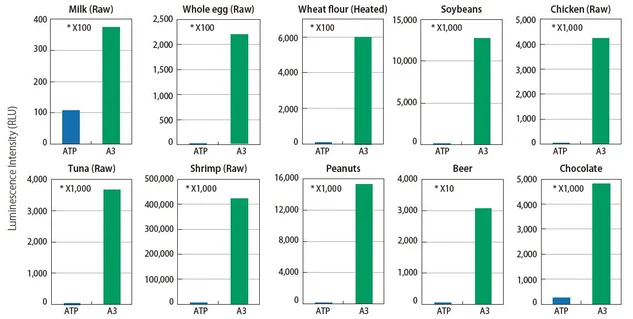Brazil nuts are seeds derived from a sizable South American tree in the Lecythidaceae family. Contrary to their name, they are not technically classified as true nuts but are seeds encased within a hard outer shell, akin to coconuts. Brazil nuts fall into the category of major tree nuts and have the potential to elicit […]
News
Almonds are seeds from a widely cultivated tree belonging to the Rosaceae family. While the fruit of the almond tree is a drupe rather than a true nut, almonds are considered major tree nuts and have the potential to cause severe allergic reactions, even with the risk of fatality. To mitigate the risk of cross-contamination […]
Cashew seeds, derived from the tropical evergreen tree Anacardium occidentale of the Anacardiaceae family, are commonly referred to as cashew nuts. However, they are actually seeds that develop within a kidney-shaped hard shell attached to a cashew apple. Considered as major tree nuts, cashews have the potential to induce severe food allergies, including life-threatening reactions. […]
Coconuts are drupes derived from the coconut tree (Cocos nucifera), a palm tree thriving in hot and humid climates worldwide. Despite the common assumption, coconuts are not tree nuts and are often misclassified as such. The majority of coconut production, over 70%, originates from tropical regions in Asia. Coconut allergies are relatively uncommon, with only a […]
Crustacea, a diverse group of aquatic arthropods, encompass well-liked seafood choices like shrimp, crabs, lobster, and crayfish. Appreciated for their exquisite flavour and remarkable nutritional benefits, they are consumed worldwide. However, it’s important to note that crustaceans can trigger severe allergic reactions in individuals with sensitivities. Given the inherent risks of cross-contamination during processing, it […]
Hazelnuts, the edible seeds of a tree from the birch family, are renowned for their delightful taste and significant nutritional content. They are commonly cultivated due to their rich flavour and high nutritional value. Despite the hazelnut fruit being a drupe enclosed in a hard shell, hazelnuts are classified as major tree nuts and can […]
Lupin, commonly encountered as garden flowers, belongs to the legume genus Lupinus, encompassing more than 200 species. Certain types of lupin legume seeds can be ground into lupin flour, which finds frequent application in bread, pasta, cakes, and pastries. Renowned for their elevated protein and fibre content, lupin seeds are increasingly being embraced as a […]
The macadamia tree genus originates from Australia and is renowned for its delectable fruit, the macadamia nut. Encased within a remarkably tough shell, the seed is commonly utilized in various baked goods, confectioneries, breakfast cereals, and is also enjoyed as a standalone snack. Although macadamia nuts have a relatively lower prevalence of allergies compared to […]
Milk, a nutritionally valuable substance abundant in proteins, fats, and vitamins, serves as a crucial source of nourishment for young mammals and is widely consumed in human diets. However, it is important to note that milk is also a prevalent allergen, capable of triggering potentially life-threatening reactions in sensitive individuals. It is important to differentiate […]
Mustard, obtained from plants in the Brassica and Sinapis genera, features small, spherical seeds renowned for their application as a spice. The creation of prepared mustard, a beloved condiment, involves blending ground mustard seeds with water, vinegar, and other components. Yellow, brown, and black mustard types are frequently employed in a diverse range of culinary […]























 Exportable Data and Reports for Regulatory Compliance
Exportable Data and Reports for Regulatory Compliance


 See how A3 technology finds what ATP technology can’t
See how A3 technology finds what ATP technology can’t


